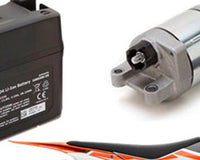In a time where insane fuel prices are the norm and everyone is watching their CO2 output, auto manufacturers are finding new ways to build their vehicles to be more suited to the modern driver’s needs.
One of these features is an in-built stop-start system. What this does is it switches off the Internal Combustion Engine when the car is stopped and switches it back on when the driver lifts their foot off the brake or accelerates the vehicle. This is done to prevent idling, and ultimately save the driver money on fuel consumption and reduce the car’s CO2 output.
Great for those pesky afternoon traffic jams, this feature is supposed to save the driver money on fuel costs as they’re using less of it, but the real benefit is for the manufacturer, who gets to advertise the vehicle as eco-friendly and meet strict carbon emissions targets.
But what effect does all this have on the battery?
Surely stopping and starting the vehicles every few minutes would put a significant strain on the battery, as it has to provide a pulse every few minutes. And if the driver is contently taking shorts trip where they are constantly turning the engine on and off, this provides a further strain on the battery as it doesn’t have time to recharge.  Luckily, modern batteries are designed to be tougher than ever. Modern vehicles already have heaps of gadgets plugged into them, such as phones, reverse cameras, and sensors, so you can imagine the battery is made to handle that. In order to cater to a stop-start function, the vehicle requires a bigger, high-performance battery, with a high voltage output. This also means the battery will cost more to replace, as you get what you pay for.
Luckily, modern batteries are designed to be tougher than ever. Modern vehicles already have heaps of gadgets plugged into them, such as phones, reverse cameras, and sensors, so you can imagine the battery is made to handle that. In order to cater to a stop-start function, the vehicle requires a bigger, high-performance battery, with a high voltage output. This also means the battery will cost more to replace, as you get what you pay for.
With all these features becoming more and more common, battery manufacturers are keeping up by using new technology to provide a greater amount of energy for all your car’s applications.









